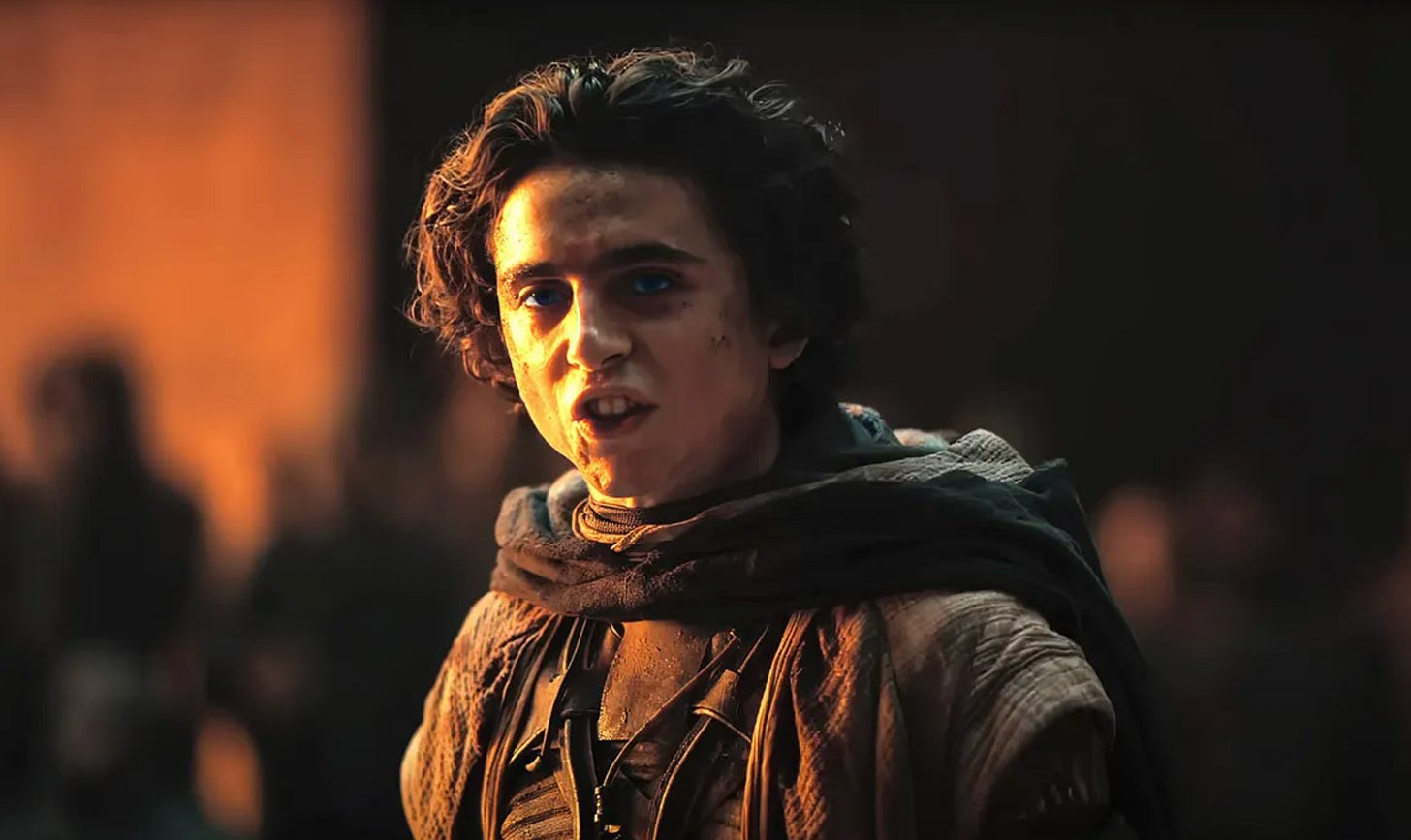The state of the movie star (and the movies)
The Rock's star is falling while a new generation rise. But can they save the movies? Probably not on their own.
When “Black Adam” fizzled at the box office in October 2022, it turns out it wasn’t just the beginning of the end for the “DC Extended Universe,” but of star Dwayne “The Rock” Johnson as a reliable movie star.
“Black Adam,” a DC Comics antihero, was Johnson’s passion project that he had spent over a decade trying to make. But after it failed to even crack $400 million at the global box office, Johnson’s attempted DC coup was cut short; a mere week after the movie’s release, James Gunn and Peter Safran were announced as the heads of a newly created DC Studios, charged with rebooting the DC film and TV franchise. Never mind that Johnson had reportedly forced a Henry Cavill Superman cameo at the end of “Black Adam”; both Johnson and Cavill’s time in the DC Universe would be coming to an abrupt end.
In hindsight, “Black Adam” wasn’t even DC’s biggest disaster compared to last year’s releases. It still earned more in its opening weekend in the US than “Shazam! Fury of the Gods” and “Aquaman and the Lost Kingdom” did combined. But it did show a new side of Johnson, or at least a side his carefully curated persona had overshadowed in the public eye. When the movie disappointed at the box office, he still claimed it was profitable in a desperate tweet citing his financiers (on the same day an obviously PR-backed Deadline piece tried to push the same narrative). Most importantly, it showed that his star power has its limits.
Since “Black Adam,” Johnson has ran back to the safe arms of the “Fast and Furious” franchise (which he had taken a hiatus from over a beef with Vin Diesel) and the WWE. That brings us to the present day, where his reputation has been hit by, partly, a recent Wrap report that painted him as being so consistently late to the set of Amazon’s upcoming action movie “Red One” that it pushed the budget to an eyebrow-raising $250 million.
Over the last decade or so, Johnson had built himself into a bonafide movie star, one of only a few, by joining the “Fast” franchise, headlining a “Jumanji” reboot, and giving life to action movies that otherwise probably would have fallen flat, such as “Rampage” ($428 million worldwide) and “San Andreas” ($474 million). More so, he had gained a reputation for being a global movie star, able to attract audiences in the coveted Chinese market (“Rampage” and “San Andreas” earned $260 million combined in the region).
But Johnson’s current uneasy status in Hollywood reflects both a changing movie industry and a fresh batch of Hollywood talent. On the former, for starters, China is not the dependable box-office market is once was. Over the course of the pandemic, in my former job as an entertainment reporter at Business Insider, I wrote a lot about how the Chinese film business was focusing more and more on local productions, with a long-term goal of increasing the annual box office of its own movies at the expense of Hollywood blockbusters. The country’s film officials didn’t even approve any pandemic-era Marvel releases until last year, for a bevy of reasons. And when they finally came to Chinese theaters, they didn’t exactly make waves.
On the latter, just look at “Dune: Part Two” if you want to know who is ushering in a new generation of Hollywood talent. It stars Timothee Chalamet, who headlined two of Warner Bros.’ most successful movies (also “Wonka”) in the span of a couple months; Zendaya, one of the biggest young stars on the planet; and Austin Butler, of “Elvis” fame. But “Dune: Part Two” also showcases another trend in Hollywood: it’s not just stars that can sell a movie.
Sure, that’s been a the story for a while now, brought on by the superhero (i.e. Marvel) boom of the 2010s. But coming out of the pandemic, it’s not the superhero movies or long-running franchises that are driving audiences to theaters in droves. It’s movies like the “Dune” sequel, “Barbie,” “Wonka,” and “Oppenheimer.” What do all those have in common? They are star-studded, yes, with recognizable faces and names that moviegoers tend to adore. But they are also based on familiar, but not overdone, IP (in the case of “Oppenheimer,” director Christopher Nolan is a brand in himself).
Two recent movies have tried to test that trend. “Challengers,” starring Zendaya, opened recently with $15 million. Would an R-rated adult erotic drama about tennis had even made that much without her? No. But it still wasn’t a sensation, especially considering it carries a hefty (for that kind of movie) production price tag of $55 million. It held strong in its second weekend, and has crossed $30 million in the US (and $50 million globally), but movies typically have to earn over double their budget to be profitable. And mark my words, “Challengers” will be a hit when it inevitably arrives on Prime Video (it was released by Amazon MGM), just like the studio’s “Saltburn.” Studios just aren’t rising to the challenge of getting young people out to theaters in droves for original movies.
The other movie was this past weekend’s action-comedy “The Fall Guy,” starring Ryan Gosling and Emily Blunt fresh off of Barbenheimer. The movie earned $28 million in the US in its debut weekend ($65 million globally), a fine but not great tally for a movie costing $130 million to make. Both “Challengers” and “The Fall Guy” will need to drive impressive word of mouth in the coming weeks to be considered true hits.
If we rewind a bit to last year, we saw something similar: the Jennifer Lawrence-led “No Hard Feelings,” an original romantic comedy, earned $87 million globally. Maybe that’s good for an original romantic comedy today, but not the kind of result that justifies Lawrence’s reported $25 million salary. The recent outlier has been “Anyone But You,” another romantic comedy, which coasted to an impressive $220 million at the worldwide box office largely thanks to star Sydney Sweeney’s social-media prowess.
So maybe a movie today needs at least two of the following three: likable and recognizable stars, familiar but not overdone IP, a robust social-media presence that engages with young people (the outlier to this rule is maybe horror movies; even those have been struggling lately, but I think that’s mostly the fault of the movies themselves and not a reflection of the genre — yet, anyway).
An aside: Theater owners will say that the problems with the overall box office since the pandemic have more to do with the amount of movies being released than the movies themselves, which is true to an extent. The double Hollywood strikes of last year hit what was already a lackluster theatrical calendar. But coming into this past weekend, the overall US box office was down more than 20% compared to this point last year, even with a similar number of releases (By the way, if Paramount is sold to Apollo and Sony, which is looking more possible than it did a week ago, that would likely eliminate another major studio and exacerbate the problem even more).
Yikes! It used to be so easy.
Beyond the Traverse
Apollo of my eye: The Paramount sale saga continues, as Apollo and Sony are back in the game
Maze Bummer: “The Maze Runner” is getting a reboot that is apparently NOT a sequel or a re-do, but is also a “continuation of the story” and a “return to the elements” of the original trilogy…what??
The Dead Speak: “Star Wars: The Phantom Menace,” a 25-year-old movie that everybody hated until recently, was No. 2 at the box office over the weekend
Okey dokey: Amazon’s (very good) “Fallout” series, based on the video-game franchise, is a hit (but I still think it shouldn’t have been a binge release)







There is another big problem with attracting the younger crowd. That is their attention span. I work in education, and let me tell you, after the pandemic, I noticed a huge change. Kids can not sit still and watch something for more than 15 minutes now. I’ve noticed this is the case with movies and shows, too. They just cannot stand being bored for a single iota. If they are watching something, it is in the background while they game. The only videos that hold attention is a platform like TikTok. Where they watch something for 15 seconds and then scroll to the next. I think theaters might struggle to adapt to the new generation because kids cannot sit in a room and do just one thing without breaks for two hours.